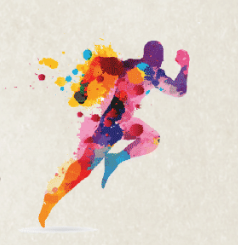MARATHON - LONDON
In April 2008, six Maasai warriors ran in the London Marathon. They were from Tanzania and they weren’t in usual running clothes. The warriors weren’t trying to break any records, either. They were hoping to bring attention to the drought in their country. They also wanted to raise money to dig wells for safe drinking water in their village. The six warriors were Isaya, Kesika, Lengamai, Ninna, Nguvu, and Taico. They wanted to raise money to make living conditions in their village better. The village is home to about 1,000 people. A 40-year drought affected the Maasai people’s land very badly. In 2007, they didn’t have even a drop of rain for 10 months. This caused the deaths of many older adults, children, and cattle . However, they found some underground water sources in the area. This is why the warriors wanted to dig wells. The runners were having an English lesson when they came up with the idea. The Maasai students were studying verbs, including the word “run.” The class began talking about marathons. “They asked, ‘What is a marathon?’” said Paul Martin. Martin is working for the Greenforce aid agency. This group aimed to help the Maasai for many years. “I explained to them that many people run every year in the London Marathon to raise money for different reasons. They found it very strange that you can raise money just by running because this is something they do every day, anyway,” Martin said. The warriors realized that they could run a marathon to raise at least $39,400, which is the amount needed to dig one well for their Eluai village. The warriors were used to travelling long distances . There were about one million Masaai people living in Africa. They lived across East Africa in the countries of Kenya and Tanzania. They often walked as far as they could to find water. The Eluai villagers walked about 18.6 miles from home each day with their cattle. They ran between houses, which could be as far as 6 miles away from each other. Children ran to and from school. These trips became more dangerous because of the drought. Tanzania has a hot climate. People who walk or run long distances can become extremely thirsty. Wild animals can also attack them. In April, the warriors arrived in London for the marathon. None of them had ever visited a large city. They thought it was very cold in London. On the day of the marathon the warriors were wearing their traditional red robes. They wore shoes made from car tires instead of sneakers. They also wore beads and carried shields and sticks, as they did while travelling across their homeland. The warriors knew that their fundraising would go well even before they ran the marathon. Three days before the race, three people approached Dave Bedford, who was in charge of the marathon. They gave him $296 for the Maasai. “The fact that people have heard what the warriors are doing and that they understand how magnificent it is, is a great sign,” Bedford said. After the race, fundraising continued online. As of May 19, the warriors had raised over $200,000 for their village.

